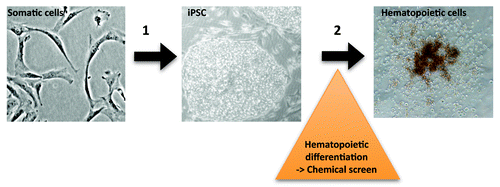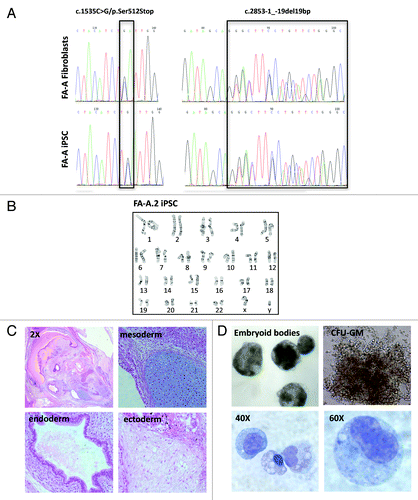Figures & data
Figure 1. In vitro blood formation of Fanconi anemia induced pluripotent stem cells. (1) Direct reprogramming of human FA fibroblasts yields disease-specific iPSC containing patient gene mutations. (2) Directed differentiation of iPSC results in hematopoietic progenitor cells, enabling disease modeling and chemical screens.

Figure 2. Feasibility of deriving hematopoietic cells from uncorrected FA-A iPSC. (A) DNA sequencing chromatograms showing disease-causing compound heterozygous mutations in the FANCA gene, present in the patient fibroblasts and resultant iPSC. (B) Normal karyogram of the FA-A.2 iPSC line. (C) Teratoma derived from the FA-A.2 iPSC line (2X overview and 20X magnification). (D) Formation of embryoid bodies (EBs) from FA-A iPSC.2. Dissociated EBs yielded hematopoietic colony forming units (CFU); Cytology of hematopoietic cells derived from CFU (Wright-Giemsa stain).
